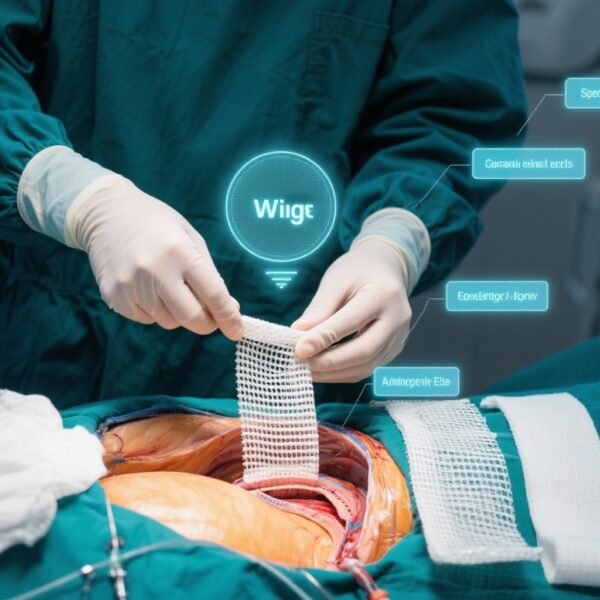Highlight
- The Evolution trial investigated a novel radiotherapy-free regimen of pembrolizumab combined with platinum-based chemotherapy for unresectable, locally advanced NSCLC with PD-L1 TPS ≥50%.
- The study showed a promising 2-year progression-free survival (PFS) of 67%, comparable with historical chemoradiotherapy results.
- The safety profile was manageable, with no treatment-related deaths and expected immunotherapy- and chemotherapy-associated adverse events.
- This regimen offers a potential alternative to the current standard of concurrent chemoradiotherapy followed by durvalumab consolidation, particularly for patients unable to tolerate radiotherapy.
Study Background
Locally advanced non-small-cell lung cancer (NSCLC), especially when unresectable, presents a major therapeutic challenge. The current standard treatment for this patient population has been concurrent chemoradiotherapy, followed by consolidation immunotherapy with durvalumab, an anti-PD-L1 antibody, which has demonstrated progression-free and overall survival benefits. However, radiotherapy-related toxicity remains a significant concern, and some patients are ineligible for or refuse radiotherapy. Moreover, the optimal management of locally advanced NSCLC with high PD-L1 expression remains to be fully elucidated. Immune checkpoint inhibitors such as pembrolizumab have revolutionized treatment for metastatic NSCLC with high PD-L1 expression, yet their role as a frontline treatment without radiotherapy in the locally advanced, unresectable setting is less established. The Evolution trial (WJOG11819L) investigated whether pembrolizumab combined with chemotherapy, omitting radiotherapy, could yield favorable outcomes for patients with a PD-L1 tumor proportion score (TPS) of 50% or greater, a subgroup hypothesized to derive enhanced benefit from immunotherapy-based strategies.
Study Design
This was a prospective, multicentre, single-arm, phase 2 clinical trial conducted at nine Japanese institutes. Eligible patients were adults (≥20 years) with histologically confirmed, unresectable, locally advanced NSCLC, who had not received prior systemic therapy and presented with PD-L1 TPS ≥50%. Performance status was required to be 0 or 1, and patients needed at least one measurable lesion and adequate organ function.
The induction treatment consisted of four cycles of pembrolizumab (200 mg every 3 weeks) combined with platinum-based chemotherapy: either cisplatin 75 mg/m2 or carboplatin (AUC 5 for non-squamous, AUC 6 for squamous NSCLC) plus pemetrexed 500 mg/m2 for non-squamous histology, or nanoparticle albumin-bound paclitaxel 100 mg/m2 on days 1, 8, and 15 for squamous cell carcinoma. This was followed by maintenance therapy with pembrolizumab (200 mg every 3 weeks) with or without pemetrexed (500 mg/m2) for up to 2 years.
The primary endpoint was 2-year progression-free survival (PFS). Safety was monitored continuously, recording adverse events graded according to standard criteria. All enrolled patients receiving at least one dose of therapy were included in the efficacy and safety analyses.
Key Findings
Between May 2020 and February 2022, 21 patients were enrolled and treated. The median age was 73 years, predominantly male (76%), with all patients meeting inclusion and eligibility criteria. Most patients (86%) completed induction therapy, and nearly half (48%) completed maintenance therapy. The median follow-up was approximately 32.5 months.
The 2-year PFS rate was 67% (90% CI 46–83), a favorable outcome compared with historical data for chemoradiotherapy plus durvalumab in similar populations. These results support the hypothesis that a radiotherapy-free approach combining pembrolizumab and chemotherapy can provide durable disease control in this subgroup.
Regarding safety, grade 3 or higher adverse events were common but consistent with known profiles: neutropenia (38%), leukopenia (19%), and pneumonia (14%) were the most frequent. Serious adverse events occurred in one-third of patients but no treatment-related deaths were reported, indicating an acceptable safety profile. The absence of radiotherapy-related toxicity may be particularly advantageous for patients at risk of pulmonary or esophageal complications.
Expert Commentary
These findings mark a significant step toward personalizing treatment of locally advanced NSCLC by potentially sparing some patients the toxicity of radiotherapy without compromising efficacy. The strong PD-L1 expression cutoff (≥50%) likely enriched for responders to checkpoint inhibition, aligning with data from metastatic settings where pembrolizumab monotherapy or combined with chemotherapy improves outcomes. The 2-year PFS notably approaches what is observed in chemoradiotherapy plus durvalumab regimens, though cross-trial comparisons should be cautious.
Limitations of this study include the small sample size and single-arm design, which limit the strength of efficacy conclusions and generalizability. Absence of a comparative arm makes it difficult to definitively establish non-inferiority or superiority over standard chemoradiotherapy with immunotherapy consolidation. Also, longer follow-up is needed to evaluate overall survival and late toxicities.
Biologically, omission of radiotherapy may reduce local inflammatory effects that could enhance tumor antigen release, but the immunotherapy-chemotherapy combination appears sufficient to control systemic and local disease in a substantial proportion of patients. Additionally, for elderly or frail patients who often represent the locally advanced NSCLC population, reducing treatment intensity could improve quality of life without sacrificing clinical benefit.
Conclusion
The Evolution trial demonstrates that pembrolizumab combined with platinum-based chemotherapy, without radiotherapy, is feasible and yields promising long-term progression-free survival in patients with unresectable, locally advanced NSCLC expressing high PD-L1. This regimen may serve as an alternative treatment strategy for patients who cannot undergo concurrent chemoradiotherapy or who prefer to avoid radiotherapy-associated toxicity. Larger randomized trials are warranted to confirm these findings, assess overall survival, and define the optimal role of radiotherapy in combination with immunotherapy for PD-L1 high-expressing locally advanced NSCLC.
Funding and Clinical Trials Registration
This study was funded by Merck Sharp & Dohme. It was registered on ClinicalTrials.gov under the identifier NCT04153734 and is now complete.
References
Hata A, Ninomaru T, Okada H, et al. Radiotherapy-free pembrolizumab combined with chemotherapy for locally advanced non-small-cell lung cancer with PD-L1 tumour proportion score of 50% or higher (Evolution trial): a multicentre, single-arm, phase 2 study. Lancet Oncol. 2025 Oct 10:S1470-2045(25)00462-0. doi:10.1016/S1470-2045(25)00462-0. Epub ahead of print. PMID: 41082893.
Additional landmark studies relevant for context:
– Antonia SJ, Villegas A, Daniel D, et al. Durvalumab after chemoradiotherapy in stage III NSCLC. N Engl J Med. 2017;377(20):1919-1929.
– Reck M, Rodríguez-Abreu D, Robinson AG, et al. Pembrolizumab versus chemotherapy for PD-L1-positive NSCLC. N Engl J Med. 2016;375(19):1823-1833.
These references provide the current standard basis against which the Evolution trial’s findings can be interpreted.



